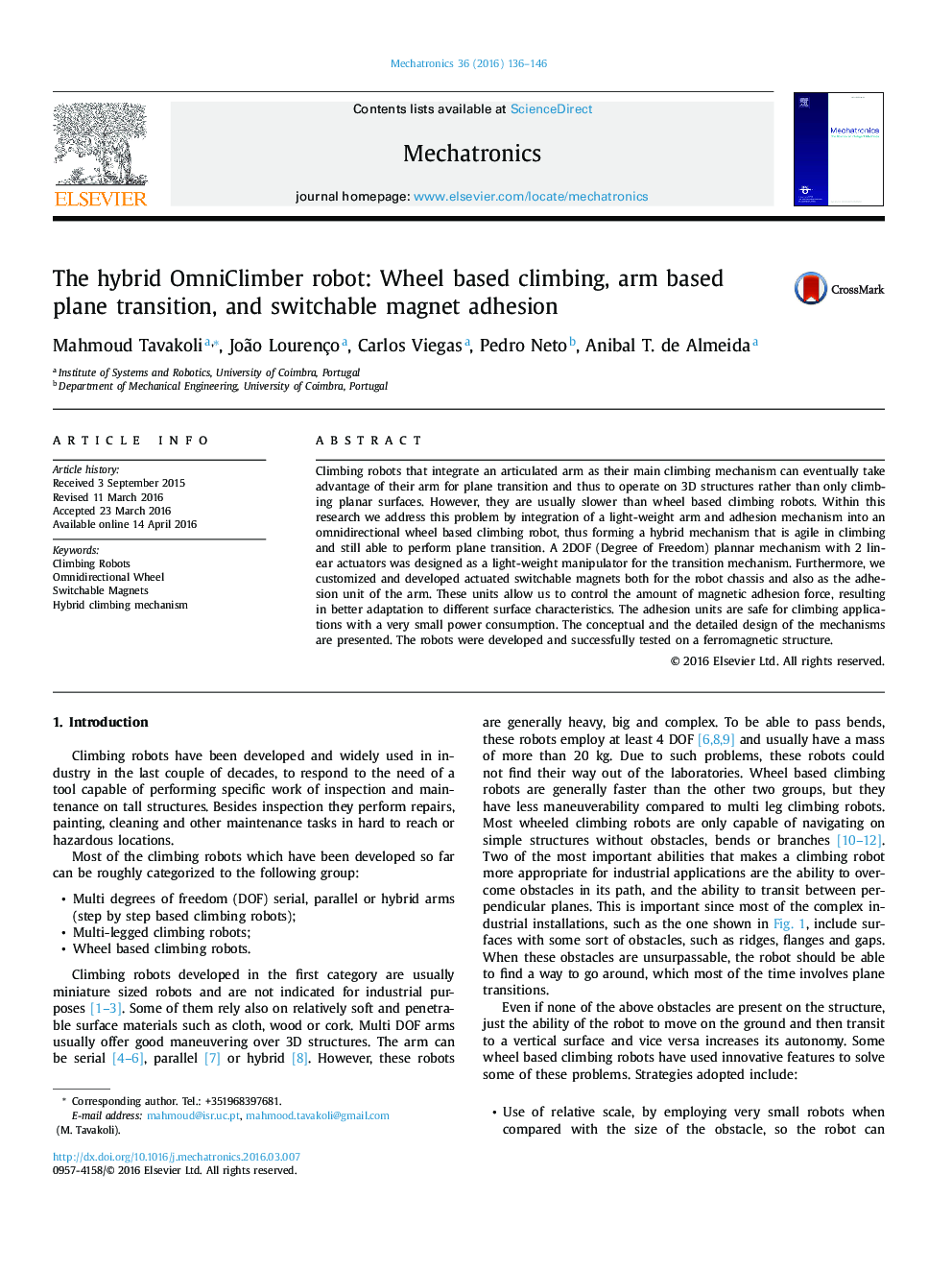| کد مقاله | کد نشریه | سال انتشار | مقاله انگلیسی | نسخه تمام متن |
|---|---|---|---|---|
| 731055 | 1461564 | 2016 | 11 صفحه PDF | دانلود رایگان |

Climbing robots that integrate an articulated arm as their main climbing mechanism can eventually take advantage of their arm for plane transition and thus to operate on 3D structures rather than only climbing planar surfaces. However, they are usually slower than wheel based climbing robots. Within this research we address this problem by integration of a light-weight arm and adhesion mechanism into an omnidirectional wheel based climbing robot, thus forming a hybrid mechanism that is agile in climbing and still able to perform plane transition. A 2DOF (Degree of Freedom) plannar mechanism with 2 linear actuators was designed as a light-weight manipulator for the transition mechanism. Furthermore, we customized and developed actuated switchable magnets both for the robot chassis and also as the adhesion unit of the arm. These units allow us to control the amount of magnetic adhesion force, resulting in better adaptation to different surface characteristics. The adhesion units are safe for climbing applications with a very small power consumption. The conceptual and the detailed design of the mechanisms are presented. The robots were developed and successfully tested on a ferromagnetic structure.
Journal: Mechatronics - Volume 36, June 2016, Pages 136–146